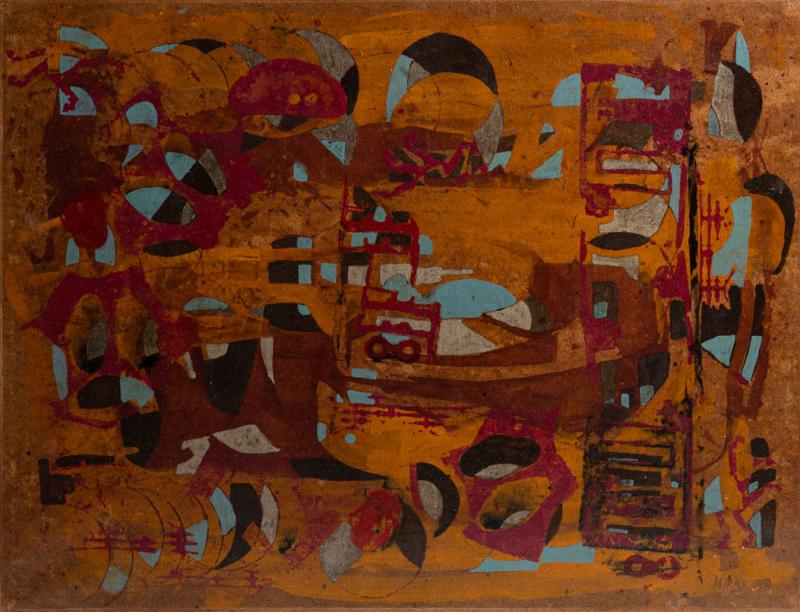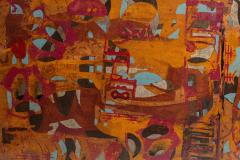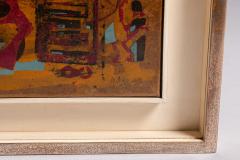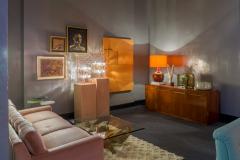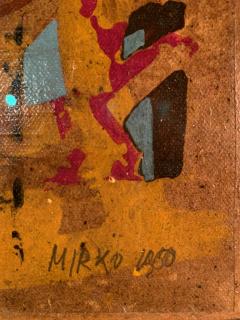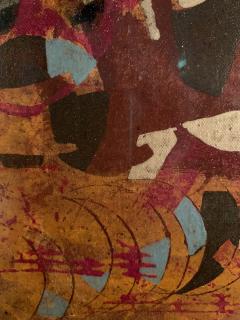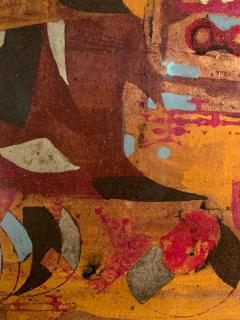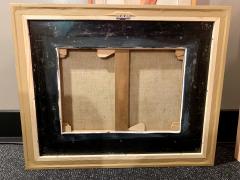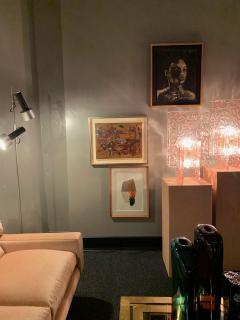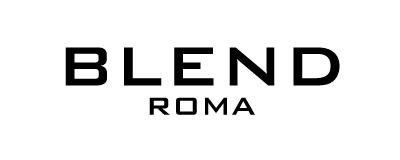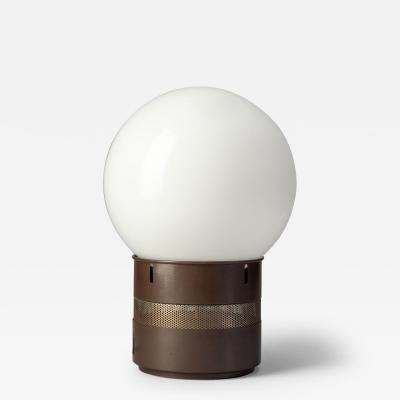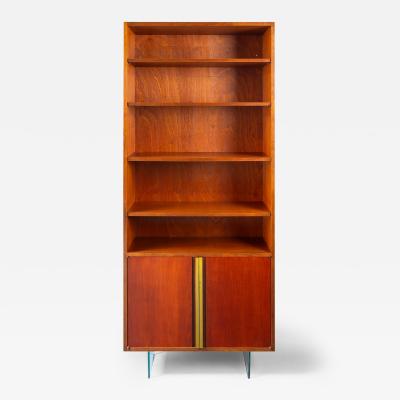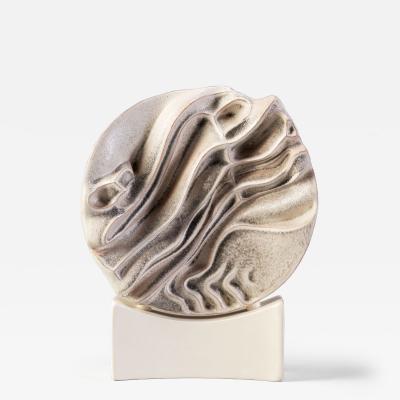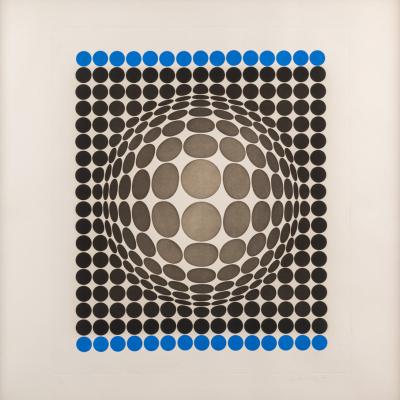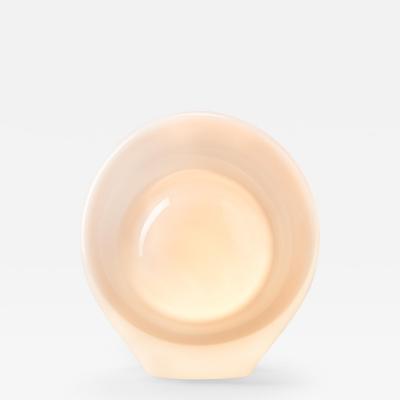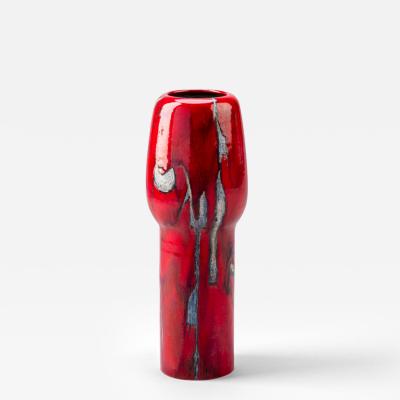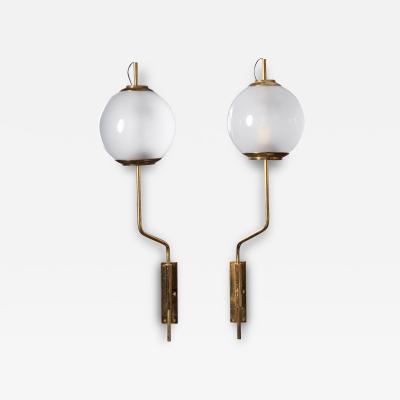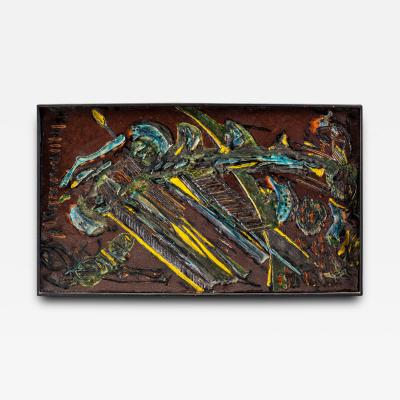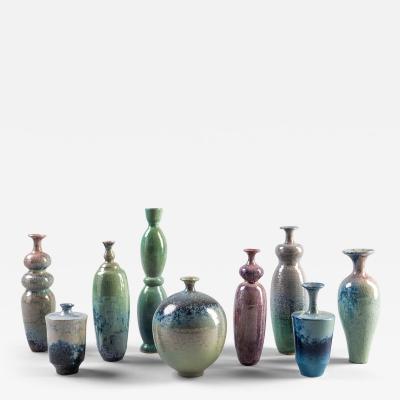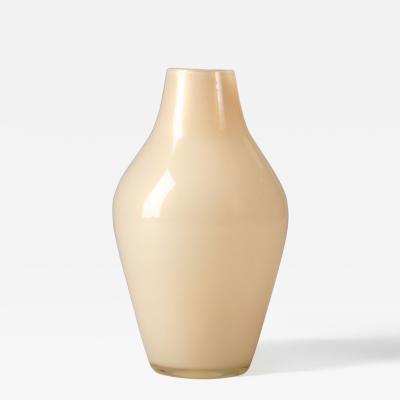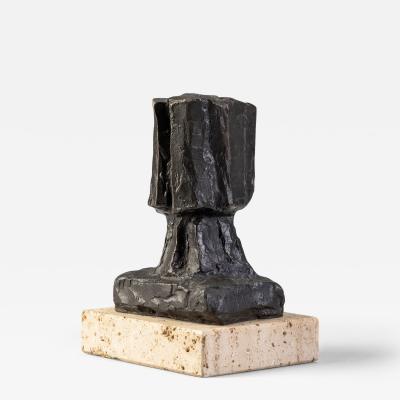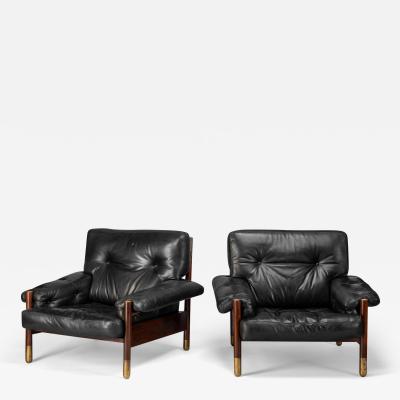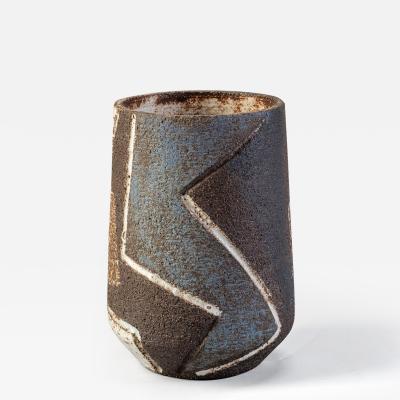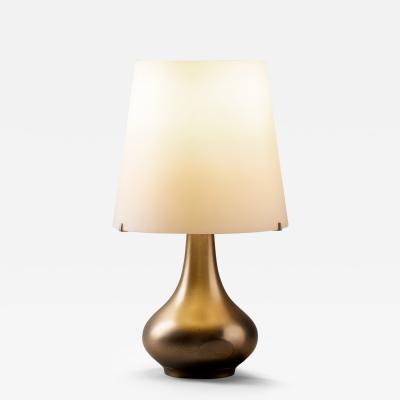Mirko Basaldella (1910-1969), “Uragano”, tempera on canvas, Italy, 1950.
-
Description
"He completed his studies in Venice, at the Academy of Fine Arts in Florence and at the School of Applied Arts in Monza, under the guidance of Arturo Martini, with whom he collaborated after 1930 in Monza and then in the Milan studio (1932-34 ). He exhibited for the first time in Udine in 1928, together with the two brothers Afro and Dino, and with the painter Alessandro Filipponi, in the 1st Exhibition of the Friulian avant-garde school. In 1934 he moves to Rome: here the young man approaches (together with his brother Afro) Corrado Cagli and the group of artists and writers who have given life to the Cometa gallery from 1935 onwards. The first works exhibited at the Sabatello Gallery in Rome in 1934 (Exhibition of the Friulian Avant-garde Group) are bronze sculptures that combine an already mature technique, a rich fantastic vein (partly inherited from Arturo Martini) to the new ideas discussed in the Roman environment, in which the "myth" it becomes a veiled transcription of a lived present. After participating in the II Quadriennale in Rome (1935), he held his first personal exhibition in 1936 at the Galleria della Cometa. In the same year he participated in the Venice Biennale with a group of artists active in Rome (C. Cagli, G. Capogrossi, A. Ziveri, G. Janni, R. Guttuso), and held a new solo show at the Galleria della Zecca in Turin, together with Afro. . In 1937 he went to Paris to visit the Universal Exposition. In 1938 he had a solo exhibition of drawings at the Cometa Art Gallery in New York. The same year he married Serena Cagli, Corrado's sister. In 1939 he exhibited at the III Quadrennial, where he attracted the attention of critics with the David (1937, bronze: Rome, Galleria Nazionale d'Arte Moderna), a sculpture in which the expressionism of the first production seems to give way to a greater finiteness and formal elegance. In the works carried out between December 1939 (Galleria di Roma) and 1945 (Rome, Galleria dello Zodiaco, with C. Cagli) new suggestions appear: fifteenth-century references from Donatello to Pollaiolo (in the bas-reliefs made with the "stiacciato" technique), echoes of Hellenistic and Michelangelo sculptures (in the Prison, 1941-42, bronze, kept in Rome in a private collection), even of exotic elements (references to Aztec mosaic sculptures). In 1946-47 the first experiences on postcubist language and on the proposal of a "neometaphysical" painting are placed. In this perspective he creates polychrome and multi-material paintings and sculptures in which the myth reappears no longer in naturalistic forms, but as a "fabulous mythical ghost". The metamorphosis, the intertwining and the circulation of space in the plastic structures appear evident in numerous sculptures, exhibited between 1948 and 1952 in personal exhibitions in New York, Rome, Milan and in various monumental works. Among these we remember the Gate of the mausoleum of the Fosse Ardeatine (bronze, 1949-51), the interventions in the FAO building in Rome (decoration of the ceiling in the hall of the general assemblies, balustrades and stained glass windows, 1952) and the iron cross of the Monument to the fallen for freedom (Mauthausen, 1954)."
The price does NOT include delivery duties.
Feel free to ask a quotation for the transport. -
More Information
Documentation: Signed Origin: Italy Period: 1950-1979 Materials: oil on paper, on canvas Condition: Good. new frame, painting in perfect conditions Creation Date: 1950 Styles / Movements: Other Catalog References: E. Crispolti, I Basaldella, Milano 1984; AA.VV., Roma sotto le stelle del '44, catalogo della mostra. Sezione arti figurative a cura di M. Fagiolo, V. Rivosecchi con la collaborazione di I. Montesi, Roma 1995 Dealer Reference #: BEFA0221 Incollect Reference #: 551198 -
Dimensions
W. 25.2 in; H. 20.47 in; D. 1.57 in; W. 64 cm; H. 52 cm; D. 4 cm;
Message from Seller:
Blend Roma, located at Via Margutta 55/b in the heart of Rome, curates unique objects that blend diverse materials, styles, colors, and forms to spark creative dialogue. Guided by instinct and taste rather than rigid rules, our collection offers inventive solutions for those who value originality. Contact us at +39.063.265.2067 or blend@blend.it.















